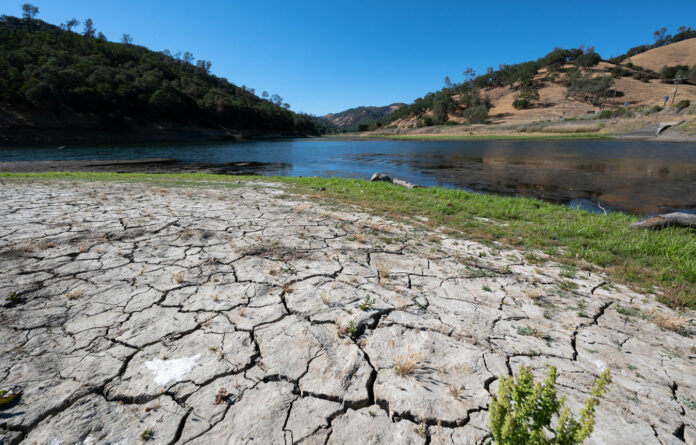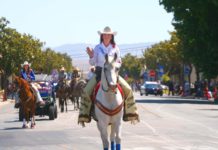
Gov. Gavin Newsom of California on Tuesday issued a proclamation extending the drought emergency statewide and asked residents to redouble their water conservation efforts amid an exceptionally dry year when wildfires have ravaged large swaths of the state.
The proclamation allows the state Water Resources Control Board to ban practices that waste water, like the washing of sidewalks and driveways, the governor’s office said in a news release. Eight counties were added to the state of emergency, including Los Angeles, Orange, San Diego and San Francisco.
The move follows the second-driest year on record, with near record-low storage in California’s largest reservoirs, the governor’s office said. In July, Newsom issued an executive order asking residents to voluntarily reduce water use by 15% compared with 2020, and by August officials said the state had reduced urban water use by 5%.
“As the western U.S. faces a potential third year of drought, it’s critical that Californians across the state redouble our efforts to save water in every way possible,” Newsom said in Tuesday’s statement.
A report this month from the California Department of Water Resources said the 2021 water year, which runs from October through September, was the driest since 1924. Just under 12 inches of rain and snow was measured, the report said, adding that California typically receives an average of about 28 inches of rainfall. Cities including Sacramento and San Francisco received well below their average annual amount of precipitation.
Severe drought conditions, worsened by climate change, continue to affect much of the Western United States and even the Northern Plains, causing headaches for farmers and ranchers and setting the stage for large wildfires to easily spread. There are eight large wildfires currently burning in California. The Dixie fire, the state’s second-largest in history, has burned more than 960,000 acres, destroyed 1,300 buildings and killed one firefighter, according to a New York Times wildfire tracker. Since the start of the year, wildfires across the state have burned more than 6 million acres.
And while droughts are not uncommon in the region, scientists say that climate change, in the form of warming temperatures and shifts in precipitation, is making the situation worse.
Rain and snow in parts of Northern California over the weekend brought at least temporary relief. The Sacramento area saw its first measurable precipitation in 212 days, and thousands across the Bay Area experienced power outages as rain showers moved through the area.
Over the next seven days, most of California and the Pacific Northwest will see a wave of wet weather, bringing as much as 10 inches of rain to certain areas. Mountainous regions across Northern California could see several inches of snow Tuesday and Wednesday, according to the National Weather Service.
This article originally appeared in The New York Times.
Copyright 2021 The New York Times Company














